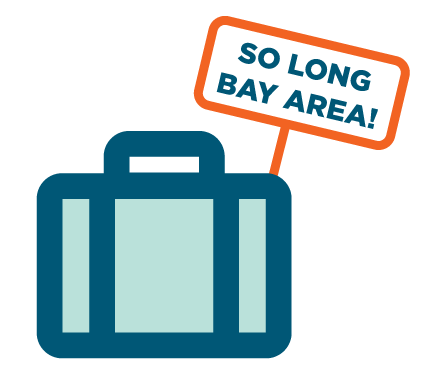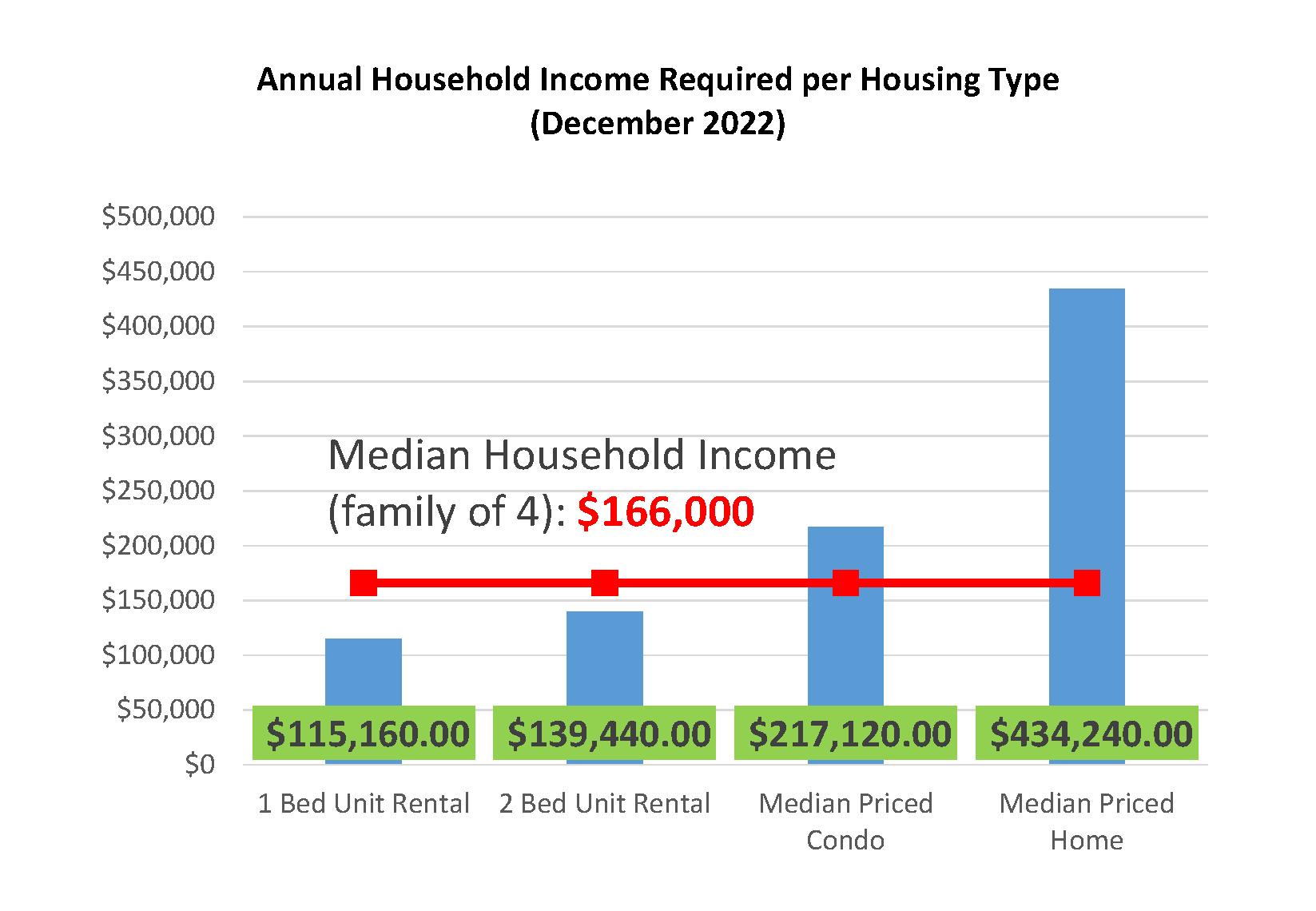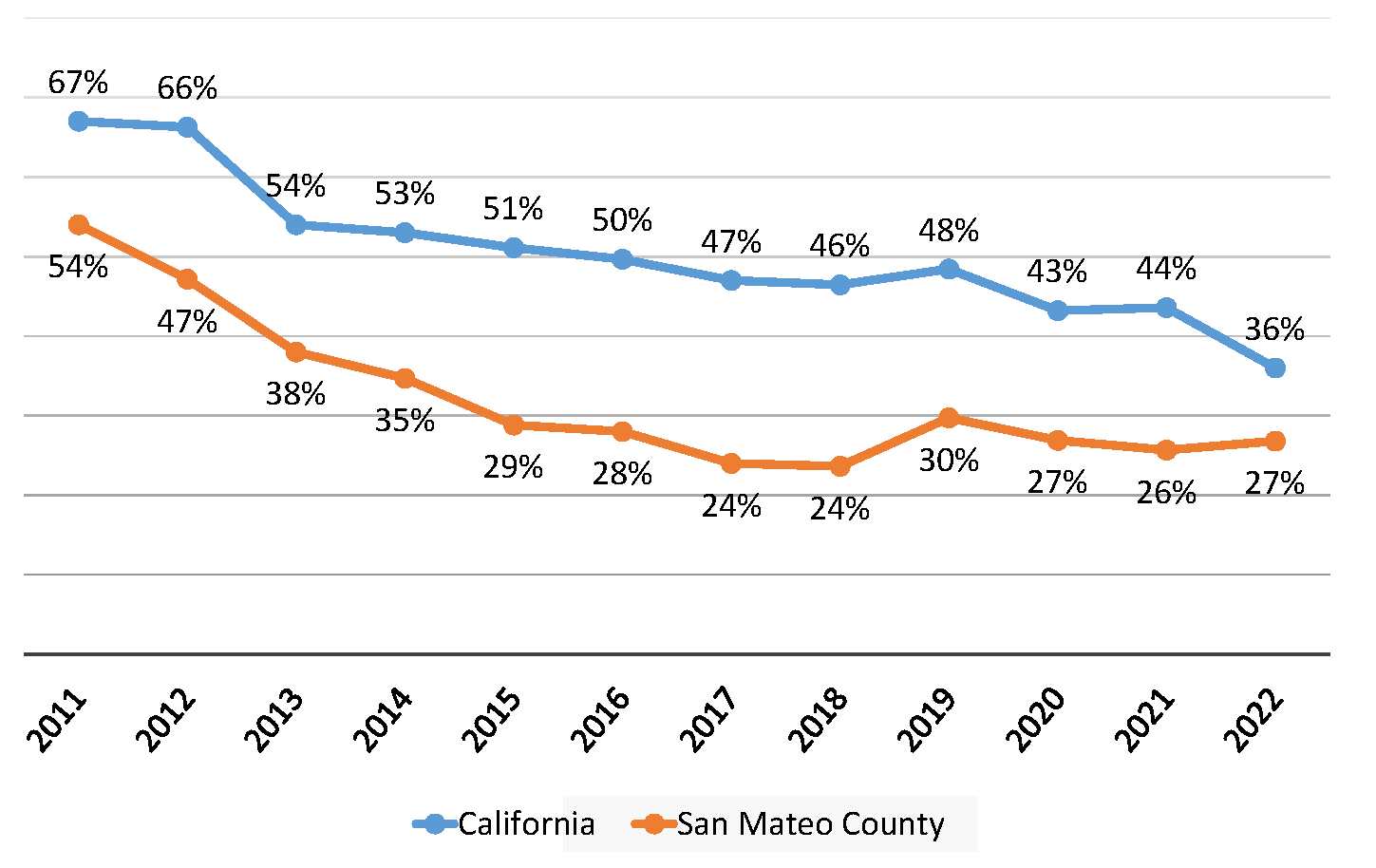The Challenge
Creating homes in San Mateo County has not kept up with demand. Lack of housing is driving older residents, the next generation, and many workers out of San Mateo County. As home prices and the cost of living continue to increase, more of our residents and workers are struggling to make ends meet. And we can all agree that everyone—veterans, families, seniors, young professionals and people with disabilities—deserves a safe place to call home.
-
One Day Homeless Count Data
Since the COVID-19 pandemic, it has become even harder to call San Mateo County home, with many residents and workers struggling to find safe and secure housing. As home prices and rents have risen but wages have stayed the same, more people are now living in vehicles, shelters, and on the street to stay close to jobs and family.
What We Know
- The number of people experiencing homelessness has increased in recent years.
- Most people experiencing unsheltered homelessness are sleeping in vehicles.
- Most people experiencing homelessness were already living in San Mateo County.
Source: https://www.smcgov.org/hsa/2022-one-day-homeless-count
Working Together to End Homelessness: Rez’s Story
For more information, visit the Homelessness Dashboard on the Human Services Agency website.
Find more infographics on homelessness on the County of San Mateo website.
-
 The Bay Area continues to have some of the highest home values in the nation (Source: Bay Area Council). We must ensure we are providing homes at all income levels. The median income for a family of four in San Mateo County is $166,000. While this may be enough to rent a 2-bedroom home as shown below, most home purchases are still out of reach for families. Learn more about income limits in San Mateo County.
The Bay Area continues to have some of the highest home values in the nation (Source: Bay Area Council). We must ensure we are providing homes at all income levels. The median income for a family of four in San Mateo County is $166,000. While this may be enough to rent a 2-bedroom home as shown below, most home purchases are still out of reach for families. Learn more about income limits in San Mateo County.

Household Income Needed for Housing Costs:

In San Mateo County, a renter needs to earn at least $139,440 per year to afford a typical 2-bedroom apartment. Most condominiums and homes are out of reach for median-income families.First-Time Buyer Housing Affordability Index:

Percent of Buyers Who Can Afford to Purchase an Entry-Level Home
What is Considered Low-Income in San Mateo County?
- Low-income is defined as 80% of the median family income for the area.
- An individual making up to $104,400 per year or a family of four with a total income of up to $149,100 per year.
- Find the full list of income and rent limits for San Mateo County here.

Factors Contributing to Housing Insecurity:
- Renters in San Mateo County need to earn $59.71 per hour, 3.7 times the minimum wage to afford the average monthly asking rent of $3,105. (CHPC housing needs report, 2023)
- Housing Authority of the County of San Mateo (HACSM) currently has over 15,500 households on its Section 8 waitlist for a rental subsidy voucher.
-
 The Bay Area is a great place to live. But throughout the region, there just isn’t enough housing to keep up with job growth, making costs go up. Just about every city and town in San Mateo County needs more homes, of all types and sizes. Each city, town and the County, town, and the county are updating their Housing Element, a plan required by the state for all the homes needed in every community.
The Bay Area is a great place to live. But throughout the region, there just isn’t enough housing to keep up with job growth, making costs go up. Just about every city and town in San Mateo County needs more homes, of all types and sizes. Each city, town and the County, town, and the county are updating their Housing Element, a plan required by the state for all the homes needed in every community.The California Department of Housing and Community Development (HCD) determines the amount of housing needed for the Bay Area as a whole, over the eight-year period covered by the Housing Element. The Association of Bay Area Governments then allocates this total housing need among all the jurisdictions in the Bay Area, including each city and county. The amount each jurisdiction needs to plan for is called the Regional Housing Need Allocation, or RHNA (pronounced ree-nuh). The total RHNA for each jurisdiction is also divided by income level, showing the amount of housing needed for various income categories.
Decades of underproduction of homes combined with exclusionary policies have left housing supply far below what is needed, resulting in high housing costs. Therefore, many San Mateo County residents, who are disproportionately lower income and people of color, must make hard decisions about paying for housing or other essential needs like food, health care, childcare and transportation. To produce more housing, we need innovative strategies to address these key components to our goal of homes for all:
Land:
- 68% of the land in San Mateo County is protected open space.
Funding: Typical sources of funding for affordable housing are:
- Debt: commercial mortgage supported by rents (20%)
- Equity: tax credit equity (40%)
- Public Subsidies: examples include but are not limited to public land donation, government funding, Measure K tax funds, funds generated by city impact or in-lieu fees, and incentives that reduce costs (examples include parking reductions and density bonuses). Source: Housing Leadership Council’s Building on Success Report, 2018.
Community Support:
- Community support is essential to building more homes. Policies that make it easier to build housing can address the planning and approval process as well as funding allocations.

Interim Housing
- The need for interim housing has increased and San Mateo County has taken great strides toward addressing homelessness. Some creative solutions include converting hotels to interim and permanent supportive housing through Project Homekey and building a new Navigation Center.


